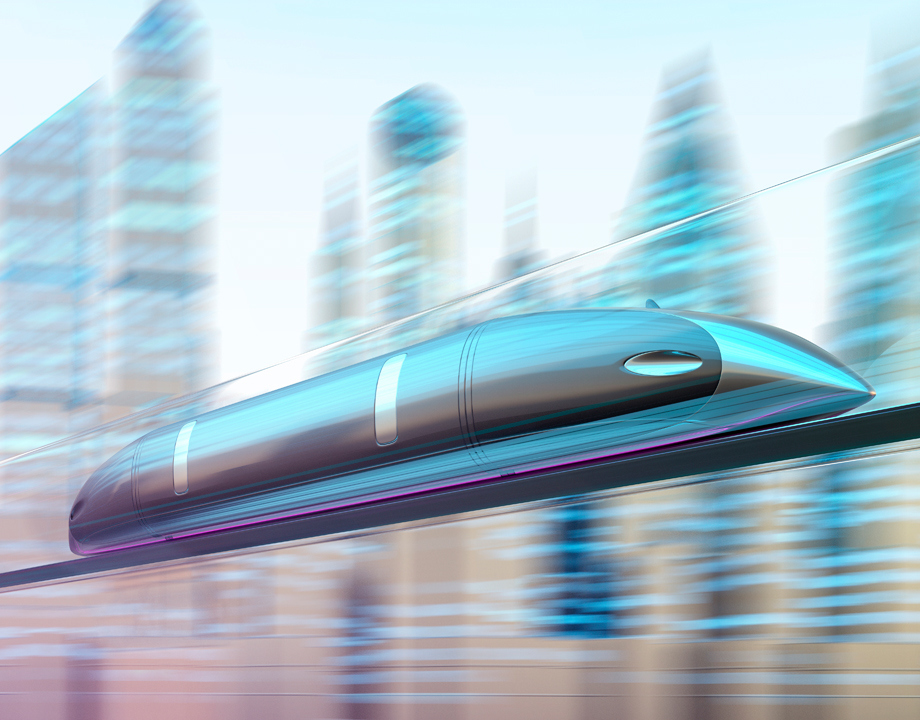7 Innovations Advancing Transportation Tech
7 Innovations Advancing Transportation Tech


Engineers continue to create new and better transportation systems that help meet social challenges around the world, including these innovations that are in use and on the horizon.
Transportation has a history of innovation, from paved Roman roads to modern transportation infrastructures. With an ever-expanding array of new tools and technologies, mechanical engineers continue to create new and better transportation systems that help meet social challenges around the world, including overcrowding, climate change, and the conservation of natural resources.
Here are seven examples of transportation innovations that are on the drawing board, in development, or in use today.
convert it into SAF. Major airlines are also on board, having invested about $17 billion in forward-purchasing agreements for SAFs.
Mark Crawford is technology writer based in Corrales, N.M.
Here are seven examples of transportation innovations that are on the drawing board, in development, or in use today.
1. Flying taxis
A number of companies have prototypes for flying taxis, which would transport passengers above snarled city traffic. In 2020, Joby Aviation partnered with Uber Technologies to develop an all-electric, vertical take-off and landing passenger aircraft, which it hopes to launch as early as 2023. Meanwhile, Volocopter GmbH, a German aircraft manufacturer, has developed an electric multi-rotor helicopter for urban air-taxi use that will soon be tested in Singapore. Start-ups such as REEF Technologies are already designing landing infrastructure, one solution being using parking garages as vertiports.2. Maglev trains
A step up from high-speed bullet trains, maglev trains use powerful electromagnets for forward propulsion and for levitating above the tracks, which eliminates the friction caused by metal wheels on conventional trains. With no moving parts, maglev trains are faster and smoother than traditional trains. China's Maglev train can reach speeds of 350 mph or higher, and Japan is currently building a Maglev connection between Nagoya and Tokyo. In the U.S., the highly congested Northeast Corridor, which stretches from Washington, D.C., to Boston, is working closely with Central Japan Railway on a super-conduction magnetic levitation transportation system, which can travel at speeds up to 374 mph. Work on an environmental impact statement is now underway.3. Solar roadways
Modular solar road panels embedded in highways can generate renewable solar power for lighting, heating, and other smart road applications, such as inductive charging, LED lighting, and heated road surfaces to melt snow and ice. So far, design and cost challenges have kept solar roadways from being fully developed, including durability, excess heat, and reduced solar-energy efficiency. However, this has not deterred the U.S. government from investing in solar highway R&D. In 2021, Solar Roadways, an Idaho-based solar technology firm, won federal contracts to continue its research on solar road panels for transportation and defense applications.4. Sustainable aviation fuels
Sustainable aviation fuels (SAFs) are formulated from a variety of renewable and waste resources, including corn and other energy crops, algae, and forestry biomass. SAFs have a much smaller carbon footprint compared to other fuels, with up to 80% lower lifecycle greenhouse gas emissions. Increased demand for SAFs is driving innovative R&D. For example, researchers at Pacific Northwest National Laboratory are working on a way to capture waste carbon and through a combination of chemistry, biotechnology, engineering, and catalysis,convert it into SAF. Major airlines are also on board, having invested about $17 billion in forward-purchasing agreements for SAFs.
5. Electric scooters
Electric scooters are growing in popularity as a quick and cost-efficient method for local transportation. Scooters are being designed with artificial intelligence (AI) and other wireless technologies for navigation. In 2021, Superpedestrian launched fleets of e-scooters in 50 cities worldwide that are equipped with onboard “pedestrian defense” systems to reduce scooter accidents. Its “vehicle intelligence” system includes self-checking batteries and electronic systems, keeping scooters out of pedestrian zones, and providing over-the-air updates to the riders. Another company, Lime, utilizes on-board cameras and AI to provide advanced safety capabilities and hazard detection.6. Walking car
Hyundai has designed an electric vehicle with jointed robotic “legs” that can effortlessly climb steep inclines and drive on irregular surfaces in a variety of terrains. Called Elevate, the prototype vehicle’s complex multi-joint legs were inspired by those of a grasshopper, giving it the ability to travel over challenging surfaces, lift itself over obstacles, and even climb stairs. The Elevate concept is based on a modular EV platform with the capability to switch out different bodies for specific situations. The robotic leg architecture has five degrees of freedom, plus wheel hub propulsion motors, and is enabled by the latest in electric actuator technology. The vehicle is ideal for getting rescue teams into disaster areas.7. Hyperloop
In 2012, Elon Musk introduced the concept for the “hyperloop.” The core structure is a pneumatic tube that uses a series of linear induction motors and compressors to propel vehicles at speeds as high as 700 mph. Compared to high-speed rail networks, the hyperloop can reduce waiting times significantly by departing every few minutes. A proposed hyperloop system in the U.S. would connect Los Angeles and San Francisco and allow passengers to complete the 350-mile trip in about 30 minutes. HyperloopTT, a network of researchers around the world, is conducting cutting-edge hyperloop research, including the development of Vibranium, a smart material with sensors embedded between carbon-fiber fuselage skin to monitor and transmit critical information regarding temperature, stability, and integrity in real time.Mark Crawford is technology writer based in Corrales, N.M.





.png?width=854&height=480&ext=.png)

